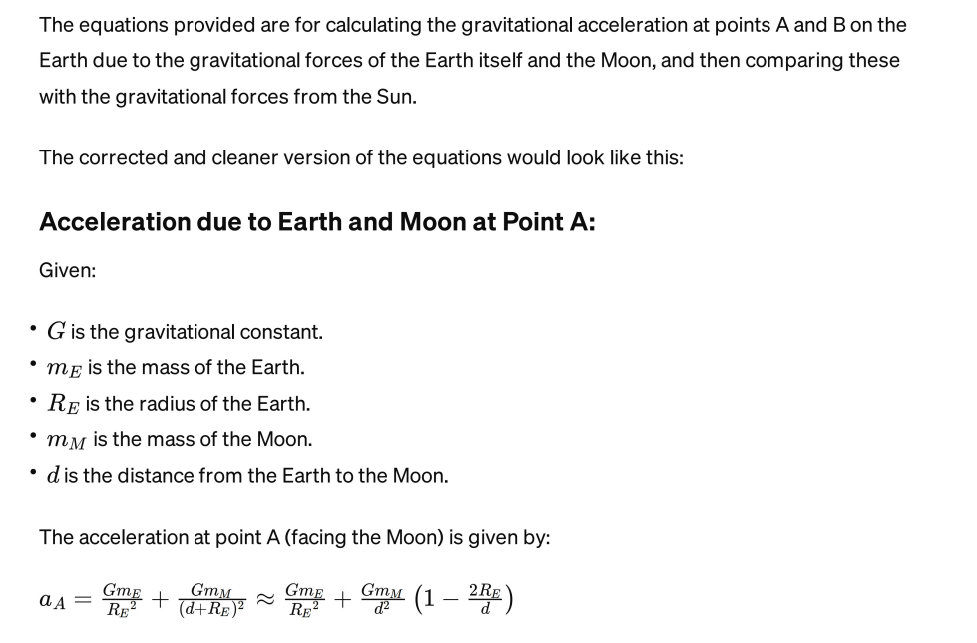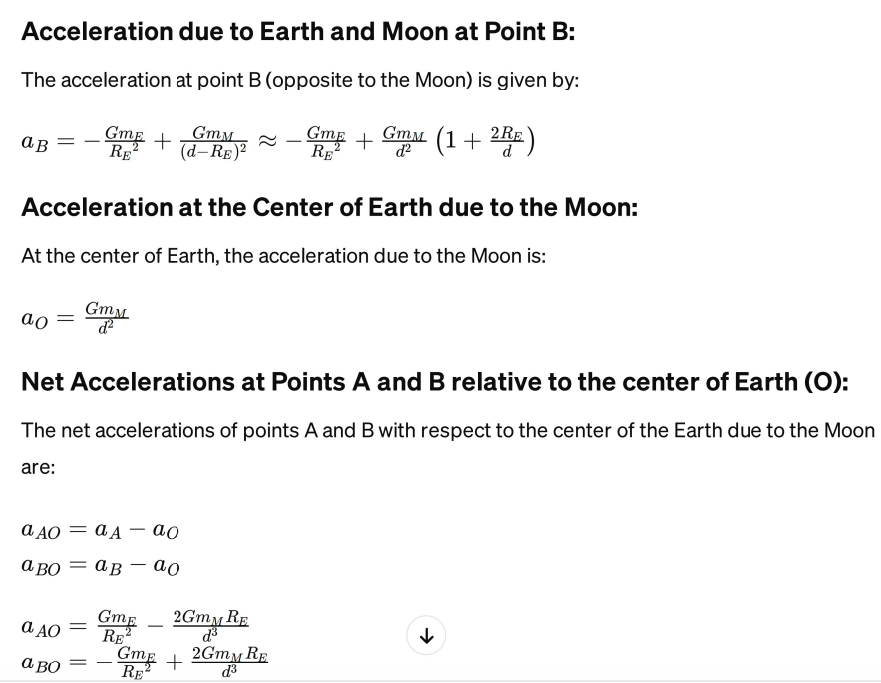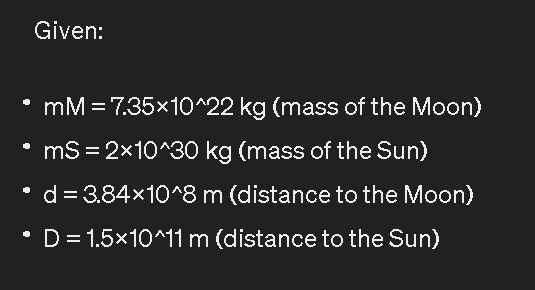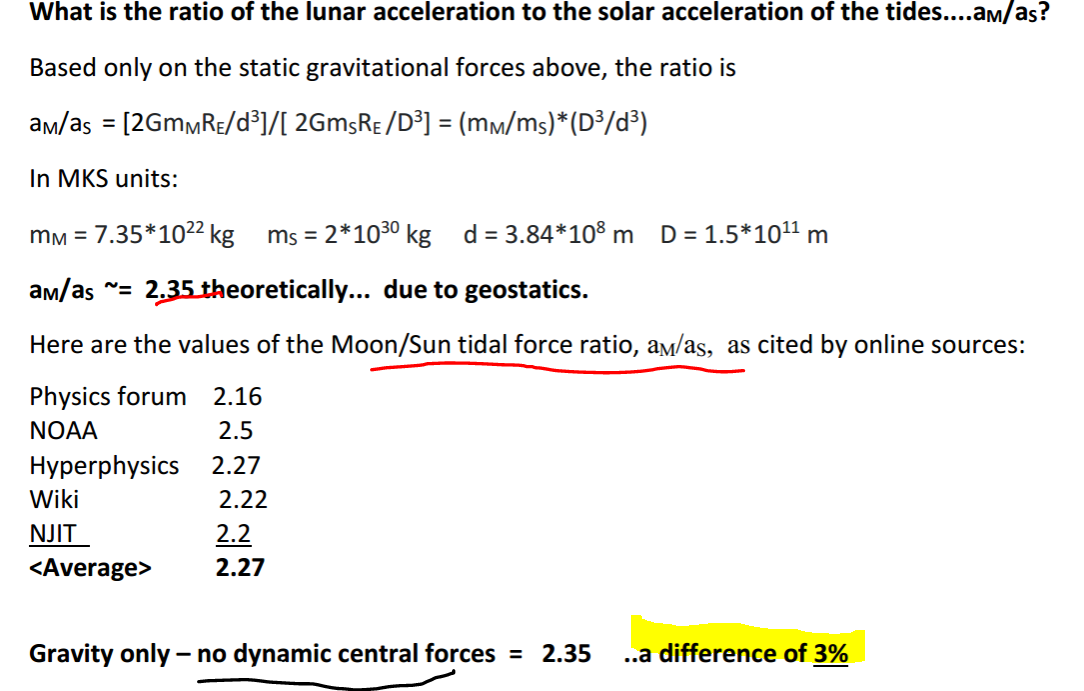[Tides pdf](https://publish.obsidian.md/shanesql/Tides+pdf)
[Tide Dynamics](https://publish.obsidian.md/shanesql/Attachments/Tide+Dynamics.pdf)
[Tide Notes - Waves, Tides, Tidal Nodes, and Amphidromic Points](https://publish.obsidian.md/shanesql/Tide+Notes+-+Waves%2C+Tides%2C+Tidal+Nodes%2C+and+Amphidromic+Points)
Related:
[Tides pdf](https://publish.obsidian.md/shanesql/Tides+pdf)
[Tides - Waves, lunar and Solar Tides, Tidal periods and Amplitudes, Tidal Forces, and Tides in Ocean Basins](https://publish.obsidian.md/shanesql/Tides+-+Waves%2C+lunar+and+Solar+Tides%2C+Tidal+periods+and+Amplitudes%2C+Tidal+Forces%2C+and+Tides+in+Ocean+Basins)
[Geocentric Tides](https://publish.obsidian.md/shanesql/Geocentric+Tides)
[Tide Notes - Waves, Tides, Tidal Nodes, and Amphidromic Points](https://publish.obsidian.md/shanesql/Tide+Notes+-+Waves%2C+Tides%2C+Tidal+Nodes%2C+and+Amphidromic+Points)
## The Geocentric Perspective on Tides: Gravitational Effects Examined
Exploring the gravity-driven nuances of Earth's tides, questions arise regarding the simultaneous occurrence of high tides on both the near and far sides relative to the Sun or Moon, and why the Moon's influence on tidal ranges significantly surpasses that of the Sun.
### Understanding Geostatics
To grasp this, we analyze the accelerations at points A and B concerning Earth's center (O), focusing solely on the gravitational pull from the Moon and Earth, as illustrated in the accompanying diagram. With O as Earth's center and X as the Moon's, we consider Earth's radius (RE), the Earth-Moon distance (d), and their respective masses (mE for Earth and mM for the Moon). Here, acceleration towards the right is positive, acknowledging that RE is considerably less than d, the distance OX.
#### Acceleration Calculations
- **Point B's Acceleration (aB):** Calculated as the sum of Earth's gravitational pull and the Moon's, adjusted for distance. The approximation simplifies to a mix of Earth's and Moon's gravitational influences, highlighting the inverse square law in action.
- **Point A's Acceleration (aA):** Similar to point B but considers the additional distance of RE in the Earth-Moon gap, leading to a slightly different gravitational influence from the Moon.
- **Center O's Acceleration (aO):** Defined purely by the Moon's gravity, emphasizing the constant pull experienced by Earth's center.
#### Relative Accelerations
The acceleration differences for points A and B relative to O illustrate a nuanced gravitational interplay, resulting in symmetrical tidal forces across Earth's diametric points. This symmetry underpins the dual high tide phenomenon, irrespective of the Moon's or Sun's position.
### Tidal Forces: Lunar vs. Solar
When substituting the Moon with the Sun, the calculations follow suit, replacing lunar mass and distance with solar equivalents. The juxtaposition of lunar and solar influences crystallizes in the acceleration difference from Earth's near to far side, laying bare the gravitational forces at play.
#### Key Ratios
The lunar to solar acceleration ratio (aM/aS) emerges from static gravitational considerations, presenting a theoretical backdrop to the observed tidal dynamics. This ratio aligns closely with various scientific sources, underscoring gravity's sole role in tidal formations.
### Geokinematics and Centrifugal Forces
The heliocentric model suggests centrifugal forces due to Earth's orbital motion around the Sun, contrasting the geocentric view where Earth remains stationary. The comparison of centrifugal to gravitational accelerations reveals discrepancies, challenging the heliocentric tide explanations.
### Conclusions
1. **Gravity as the Sole Tidal Force:** The absence of centrifugal acceleration in tidal phenomena supports a geocentric stance, where Earth's stationary position aligns with observed tidal patterns.
2. **Earth's Static Position:** The analysis bolsters the geocentric model, complementing findings from other experiments that question heliocentric assumptions.
This investigation into tidal mechanics not only reaffirms gravity's pivotal role but also invites a reevaluation of Earth's place in the cosmos, echoing historical and modern inquiries into our planetary system's dynamics.




The theoretical ratio of lunar to solar tidal acceleration (geostatics) is approximately 2.35.


to resolve why the Earth’s high tides occur when the Sun
or Moon are at both the near side and far side.
Let us try to find the acceleration at points A and B with respect to the centre of the earth O due to the influence of moon and earth, as shown in the figure. Enter image description here
O and X are the center of the earth and moon respectively. Let the radius of earth be RE
, distance between earth and moon be d
, mass of earth and moon be mE
and mM
respectively. O
to X
is taken as the positive direction. I have assumed REd
.
Acceleration of point B aB
is:
aB=GmER2E+GmM(dRE)2
=GmER2E+GmMd2(1+2REd)
Similarly, aA
is:
aA=GmER2E+GmM(d+RE)2
=GmER2E+GmMd2(12REd)
And aO
is:
aO=GmMd2
Thus, the accelerations of point A and B with respect to O are:
aAO=aAaO=GmER2E2GmMREd3
aBO=aBaO=GmER2E+2GmMREd3
But now, we get aBO=aAO
, which means that on both the sides, water will be trying to move away from the centre of the earth, thus causing tides on both the sides of the earth.
This is because the gravitational field of the Moon, like any object, is not uniform - in particular, closer to the Moon it is stronger, and further away it is weaker. With regard to the Earth, the side of the Earth that is closest to the Moon experiences a slightly stronger pull than the side further away, which effectively results in the Earth being "stretched" ever so slightly as the nearer side accelerates harder than the farther side in response - and when you stretch an elastic sphere it becomes an oblong with a bulge on each side and not just on one side like a pear (as I imagine you'd be thinking it would have to look.).
From the viewpoint of the Earth's center of mass, which is being accelerated by this effect and may be more natural for you, the reference frame change results in the side of the Earth closest to the Moon as experiencing a force toward it, and the opposite side experiences a "fictitious" force directed away, thus creating a stretch in both directions - this opposite fictitious force because that frame is not inertial, just as with driving in your car how there is a "fictitious" force when you slam the gas that wants to push you into the seat and throw the bobblehead off the dashboard.
In a uniform gravitational field, this effect does not occur. The difference in forces that produces the stretching is called, perhaps not unsurprisingly, a "tidal force".
Also, if one has read any pop sci books or seen movies about "black holes" and they've talked about getting "pulled apart like spaghetti" when you fall in because the force on your feet is higher than that on your head, that is exactly this effect but much more extreme - and conversely, this effect is a very, very incipient form of the "spaghetti pull" effect manifested over a far larger distance due to the much gentler gravitational gradient.
A two-dimensional model seems quite helpful for understanding. This is shown in the following picture.
[](https://i.stack.imgur.com/cTbwy.png)
The moon is modeled as a point mass on the right, denoted by the letter m. To see that there are tides at A and B, one needs to show that in the reference frame fixed on the Earth, the apparent acceleration one experiences at A and B toward the center of the Earth "e" is smaller than, say, that at the reference point R.
For simplicity, take the moon and the Earth to be rotating around the center of mass "C" in a circular orbit with |em| = r. The Earth may or may not be rotating by itself. When calculating the acceleration toward the center of the Earth e for the points A, B, and R respectively, the gravitational pull due to the Earth and the centrifugal acceleration due to Earth's own rotation are all exactly the same, so one may disregard them from here on.
At point A, the acceleration toward e is due to the moon's gravitational pull and the centrifugal effect due to the orbital rotation of the Earth and the moon around each other (disregarding Earth's gravitational pull and the centrifugal acceleration due to Earth's own rotation as mentioned above):
���(�−��)2+�2�=����3��+�����3=������3+�����3(r−re)2Gmm+ω2r=r3Gmmre+r3Gmmr=r3Gmmre+r3Gmmr


where
ω is the orbital angular velocity of the moon relative to the Earth,
r_e is Earth's radius, and use has been made of the familiar relation
ω^2 = G(m_e + m_m) / r^3.
Similarly, at point B the acceleration toward the center of the Earth is
���(�+��)2(r+re)2Gmm
Note that at both A and B the acceleration due to the orbital rotation of the Earth and the moon around each other is the same ����2r2Gmm and both toward the x-direction. Consequently, when calculating the acceleration toward the center of Earth e at A and B, they appear with opposite signs.
At the reference point R, the centrifugal term due to orbital motion does not contribute while the moon's gravitational pull leads to:
���(�+��)3/2(r+re)3/2Gmm
Comparing the three formulas for A, B, and R, one sees that the apparent accelerations toward the Earth's center e are the same and negative at A and B, while it is positive at R. This means there are two tides, at A and B.
Shane reading math.
All right, let's see if we can quickly go through some of Robert Bennett's math here. So we have course up here trying to find the acceleration with respect from a to O, which is over here. And that would be a to O minus a o O so. And then this one minus this one and a with respect to beo. So that would be this one. To this one and we're going to get, you know, the gravitational influences at the end of substituting all of these values, which of course, are form the heliocentric model, but we are going to pretend that they are real. And we're going on to the next slide here. Essentially, we're going to look. Look at O and X being at the center of the Earth, of course, and in the center of the moon, O and X. And then the radius of Earth will be R e standing for the radius of Earth, the distance between Earth and the Moon just BD and the mass of the Earth and the Moon be M E and respectively. So mass of Earth, mass of moon. Will be using that frequently. Acceleration to the right will be positive and left will be negative. So the acceleration at point a which would be opposite facing the moon right? Here is it got to be given by accelebration of a. Equals the gravitational force of the mass of the Earth over the radius of the Earth squared plus the gravitational force of the mass of the Moon over the distance of between the Earth and the Moon plus the radius of the Earth squared. Approximately equal to the gravitational force of the mass of the Earth over the radius of the Earth squared plus gravit. Gravitational force of the mass of the moon over the distance to the Earth to the moon squared, all multiplied by one minus two of two times the radius of the Earth over the distance from the Earth to the Moon on. So that's. That's all. Acceleration of a. Then we're going to go back and calculate acceleration of B, which would be roughly the same, but gravitational force of the mass of the Earth over the radius of the Earth squared plus gravitational force of the mass of the moon over the distance from the Earth to the moon minus the radius of the Earth squared. OOPs. We reset the slide. No problem. It's approximately equal to the gravitational force of the mass of the Earth over the radius of the Earth squared. Or the negative rather approximate a negative that and then plus the gravitational mass of the moon over the distance squared, all multiplied by 1 plus two times the radius of the Earth over the distance from the moon to the earth and moving on. We have again acceleration from point B opposite to the moon to be over. Here given by acceleration of B equals negative gravitational force of the mass of the Earth over the radius of the Earth squared plus gravitational force of the mass of the moon over. The distance of the. From the Earth to the Moon minus the radius of the Earth all squared approximately equal to the negative of the gravitational force of the mass of the Earth. Over the radius of the Earth squared plus gravitational force of the mass of the moon. Over the distance between the Earth and the moon multiplied by one plus two times Radius of the Earth over the distance between. Radius over the distance between Earth and the Moon again. And then finally we have the acceleration at point a just given as you know G gravitational force of. Gravitational force times a mass of the Earth over the radius of the eth squared plus the gravitational force of the Moon over the distance from the Earth to the Moon plus the radius of the Earth squared. Approximately equal to the gravitational force of the mass of the Earth over the radius of the Earth squared plus the gravitational force of the mass of the Moon over the distance of mass over the distance Earth to the Moon squared times one minus two time the radius of the Earth over the distance from the Earth to the Moon. And this is again approximately equal to acceleration of O would be roughly equal to the gravitational force of the mass of the moon over the distance to the from the Earth to the moon squared. And moving along here, just to show exactly where we were driving these from, this would be a B. We already went over that, but that's what this is. This was a of a again on this side where we started. And of course, the celebration with respect to the center was always there. So just making sure we know where we're calculating. So we have the acceleration at point B with respect to O this would be from this point to the center of the Earth and we have acceleration of B vers with respect to O equals celeration of B minus acceleration with respect to equals negative or approximately negative. The gravitational force of the mass of the Earth over the radius squared. The rate radius of the Earth square plus two times the gravitational force of the mass of the moon times the radius of the Earth over the distance between the Earth and the Moon cube. And then we have the acceleration of this point a with respect. Again. Concluding this side. And then we already did this side. This is just acceleration of a with fish back to zero equals clibration of a minor accelbration of O approximately eating equaling gravitational force of the mass of the Earth over the radius of the Earth squared minus two times the gravitational mass of the moon times radius of the Earth over the distance between the Earth and the moon cubed. So we do want to combine these forces. Actually, let's go back here, check something. Right? So, yeah, we do want to combine these forces. Considering the order of magnitude to the radius of the Earth from the Earth and the Earth between the moon, we need to calculate the difference. So. So the combined effect of the moon and the sun when acting in the same straight line. And again, this is indicative of the constructive interference theory of the equilibrium theory. Assuming you know all the assumptions that we're assuming currently of the universal static response to the force of gravity. You know, one one tidal basin, no other bodies of water, no Earth rotation, et cetera. But we're going to assume that when the moon and the sun are close together, and the geocentric models to be, you know, when the moon is next to the sun, they're going to increase the gravitational force exerted by the celestial bodies on the sides, like so. Right, so they're going to be combining the effect of the mass. I'm sorry. Combining the effect of the moon and the sun. When acting in the same straight line and again accelebration of respect to with A O would be what we went over before which would be exactly the those formulas right? But me to go over them again. They're right there. And this we're just going to quantify the acceleration difference due to the gravitational attraction of the Earth, Moon and Sun. Meaning that cergy all lined up. And again, the geocentric model Earth obviously doesn't move, can't be lined up with celestial bodies. But let's just assume that the alignment of the Moon and the Sun also indicates the alignment of the so called Earth, right? So we need to find this quantification with considering the order of magnitude of the radius of the Earth over the distance between the moon and the Earth and the radius of the Earth over the distance between the Earth and the moon. So the difference in acceleration from the near side to the far side to be with the acceleration of egg with respect to B equals the acceleration of a with respect to O minus the acceleration of a with respect to B. Of zero equals about two times little. A over. The acceleration of O equals 2 all times the gravitational force of the mass of the Earth over the radius of the Earth squared minus four times the force of the mass of the Moon times the radius of the Earth over the distance between the Earth and the Moon. Cubed minus four times the gravitational force of the mass of the sun times the radius of the Earth over the distance between the Earth and the Moon. Cubed now. Getting there. Almost done. Hang with me here. Finally, we're going to replace the Moon with the Sun and repeat the calculations. So that when we do this, we're substituting a mass of the Moon could be m m of m with a mass of the Sun Ms m m s and the Earth Moon distance d d with now the Earth Sun distance big dd. Okay, so with the same variables, essentially, we're going to have them mean different things. Combine the gravitational effects. And again, when the moon and sun act along the same line. We already went over these formulas, but we're going to go ahead and calculate them again. And an acceleration with the difference across Earth. Is this given by this formula over here? Celebration of the acceleration of eg. With respect to B equals a of respect to a with O and then minus a of O to B equals two times little a and acceleration of O equals two times a. Gravitational force of the mass of the Earth over the radius of the Earth squared minus four times the gravitational mass of the Moon times the radius of the Earth over the distance between the Earth and the Moon. Cubed minus four times the gravitational force of the mass of the Sun times the radius of the Earth over the distance between the. The Earth and the moon cube. All right, moving right along here, we need to find the ratio of the lunar acceleration to the solar acceleration, which would be acceleration of M and solar acceleration of S. And again back to the same diagram we started with, based only on the static gravitational forces above. The ratio could be given as again a of m with over as would be what we went over before. Essentially with just the substituting of the mass of the moon with the same formula, but this over the mass of the sun and the radius of the Earth both using radius of the earth equals approximately the distance between the Earth to the sun and the distance between the Earth and the moon cube, right? So that ratio right there, stick with us, we're almost there. The math's almost done, guys. And again, this is the heliocentric position. The best, the man that we can get to make sure we're all on the same page. Giving them the benefit of the doubt. So that we have the ratio of title to lunar acceleration translated to the MTS unit. So we get, you know, all these substitutions. We can finally get our answer. And what we get when we fill in the substitutions is the acceleration of the Due to geostatics would be 2.35. Which would be 2.35 times the gravitational force of the Sun. So the moon exerts that much more tidal force than the Sun. Very contrary to what the math would suggest or what the other model would suggest. Certainly contrary to what the equilibrium theory would suggest. Okay. Okayol.